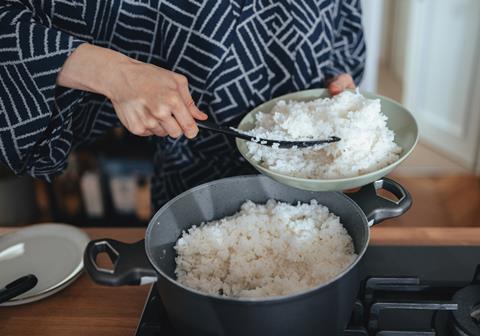
Rice is resilient, even in times of economic crisis. It’s affordable, versatile and filling. No wonder shoppers have bought an extra 3.2 million kilos – making it one of only 12 markets to deliver volume growth in this year’s Top Products.
That’s not to say rice has been immune to the woes afflicting other foodstuffs. Like many categories, price increases this year “have far surpassed the norm”, notes NIQ analyst Adam Paulson. Average price per kilo is £2.66, up 9.9% year on year.
That inflation is largely responsible for rice’s value gain of 11.6%, or £52.1m. And it has resulted in price-sensitive shoppers moving to own label, which has grown volumes 3.2% – ahead of the overall sector’s 1.7% gain.
“Unsurprisingly, private label has gained more volume than brands over the last year, and its cheaper offerings in both dry and ready-to-heat have done well,” Paulson adds.
Nevertheless, some brands still managed to record significant gains. Take Veetee, which has continued its strong growth this year with a 36% rise in value and 20% rise in volumes. This was “largely driven by continued gains in listings”, Paulson says.
Veetee’s next-placed rival Kohinoor grew values and volumes too. They’re up 29.2% and 16.4% respectively.
Rice sales continue to face obstacles
At the top, there is more of a battle for sales. Second-placed Tilda grew volumes by 3.2%, which Paulson attributes to two things: large, better-value formats and picking up trade from market leader Ben’s Original. The latter has suffered a 14.9% blow in volumes as shoppers switch to rivals.
That performance comes in the wake of Ben’s Original cutting the size of its rice pouches by 12% in early 2023. In the face of rising input costs, 250g pouches were gradually replaced with 220g versions – “both decreasing volume sold per unit and making Tilda’s RTH comparatively better value versus weight parity”, Paulson says.
“It will be interesting to see if Tilda hold at 250g for the core offering or also drop down to a 220g,” he adds.
That change remains a possibility as rice continues to face obstacles. A ban in India on all non-basmati exports sent commodity prices surging earlier this year, and it is unclear how long that will last. Furthermore, the El Niño weather pattern is already threatening production in some areas of southeast Asia, which could lead to diminished global supplies and more price hikes for shoppers in 2024.
Arguably, however, the waters have been even choppier for pasta. When the war in Ukraine – one of the world’s largest wheat producers – broke out in February 2022, commodity prices shot up to record levels.
While they have largely recovered since, the effects of local geopolitical tensions are not over yet.
This is because Vladimir Putin refuses to rejoin the Black Sea grain deal, which until July had allowed almost 33 million tonnes of grains and other foodstuffs to be exported from the region. The alternative export corridors now being used by Ukraine for grain are “proving significantly more expensive”, FDF CEO Karen Betts recently pointed out.
Weather causes grain harvest troubles
Inflationary pressures and extreme weather events have also had a serious effect on the supply chain and global product availability levels. This is especially apparent in key wheat growing regions where harvest yields have been reduced, north America and south Asia, which has contributed to higher retail prices. This has buoyed pasta from a value point of view. It’s added £47.2m, while volumes are up a more marginal 1.2%.
The vast majority of those added sales come from own label, which is benefiting from shoppers trading down.
Hence volume losses for top three brands Batchelors, Napolina and De Cecco. Between them, they’ve seen 2.1 million fewer kilos go through tills.
Napolina marketing director Jeremy Gibson says the brand has invested in a £3m “marketing transformation, which initially launched last year to challenge the common misconception that staple ingredients, such as dried pasta, are the support acts in home-cooked Italian meals”.
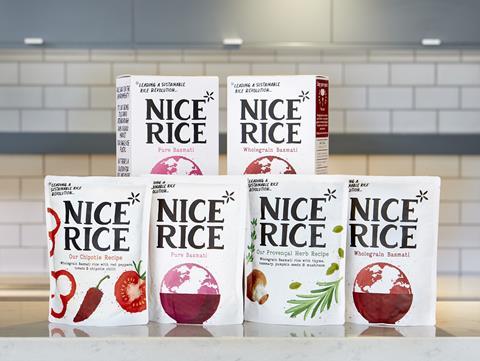
Sustainably farmed rice brand Nice Rice made its retail debut in May with the rollout of four ready-to-heat pouches into Waitrose. The brainchild of former Piper investment director Fergus O’Sullivan, Nice Rice boasts a traceable supply from farmers in north India, who use the alternate wetting and drying method for producing rice. It allows paddy fields to dry out during parts of the growing season, aerating soil and disrupting methane-emitting bacteria.
Noodle sales are on the rise
To a large degree, the problems faced by pasta and rice have also hit noodles – which are typically made from wheat or rice.
But Paulson says the sector has made a comeback despite a “significant” rise in average retail prices of 8.3%.
That can been seen in the 0.2% volume gain for the category, following the 9.1% loss we reported last year.
This revival was driven, predictably, by own label. It’s up 13.5%, or 410.9 thousand kilos, as consumers “look to make savings where they can on their weekly shop”, Paulson adds.
As such, shoppers have turned their backs on top two brands Sharwood’s and Amoy, leading to volumes losses of 25.2% and 21.6% respectively. For the former, price increases were the culprit, Paulson notes.
As commodities continue to face turmoil, price is only likely to become an even more crucial factor in the year head.
Top Launch 2023
Noodlehead | Veetee
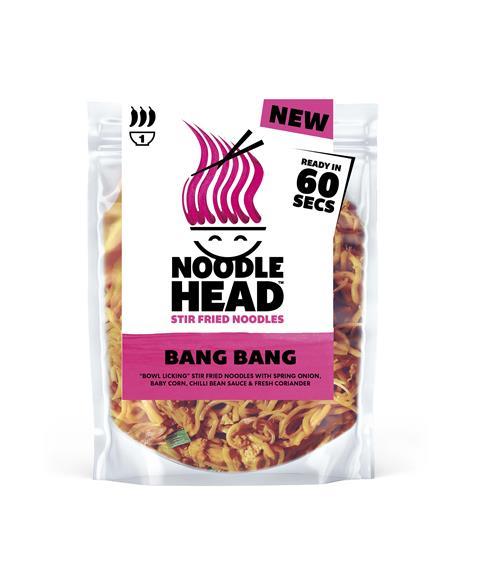
Best known for its rice, Veetee made its noodle debut in June with the release of Noodlehead. The HFSS-compliant range of fresh, al dente noodles with vegetables and sauce comes in a microwaveable pouch. Ready to eat in 60 seconds, the range comprises Singapore, Sweet Chilli, Chow Mein, Bang Bang, and Szechuan flavours (rsp: £2.50/200g). They’re targeted at young professionals and students “seeking out convenience and exotic flavours”, according to Veetee.
Face off: Top Products Survey 2023 pits brands vs own-label
- 1
- 2
- 3
- 4
- 5
- 6
- 7
- 8
- 9
- 10
- 11
- 12
- 13
- 14
- 15
- 16
- 17
- 18
- 19
- 20
- 21
- 22
- 23
- 24
- 25
- 26
- 27
- 28
- 29
- 30
- 31
- 32
- 33
- 34
- 35
- 36
- 37
- 38
 Currently reading
Currently readingRice, noodles & pasta 2023: Resilient rice volumes rise despite price
- 39
- 40
- 41
- 42
- 43
- 44
- 45
- 46



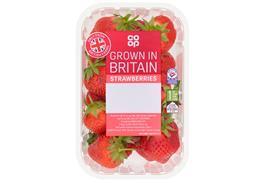



![Beans Face Off_RGB[18]](https://dmrqkbkq8el9i.cloudfront.net/Pictures/100x67/9/5/1/311951_beansfaceoff_rgb18_56926_crop.jpg)













































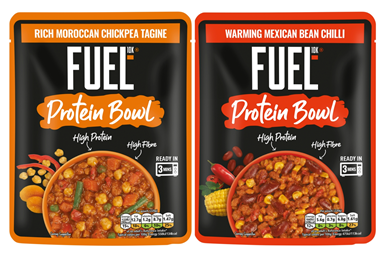



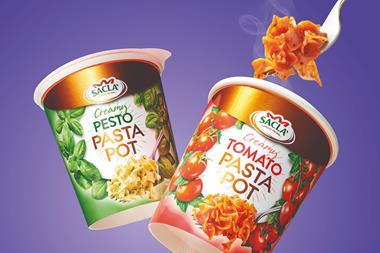






No comments yet